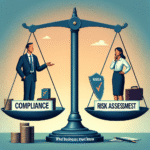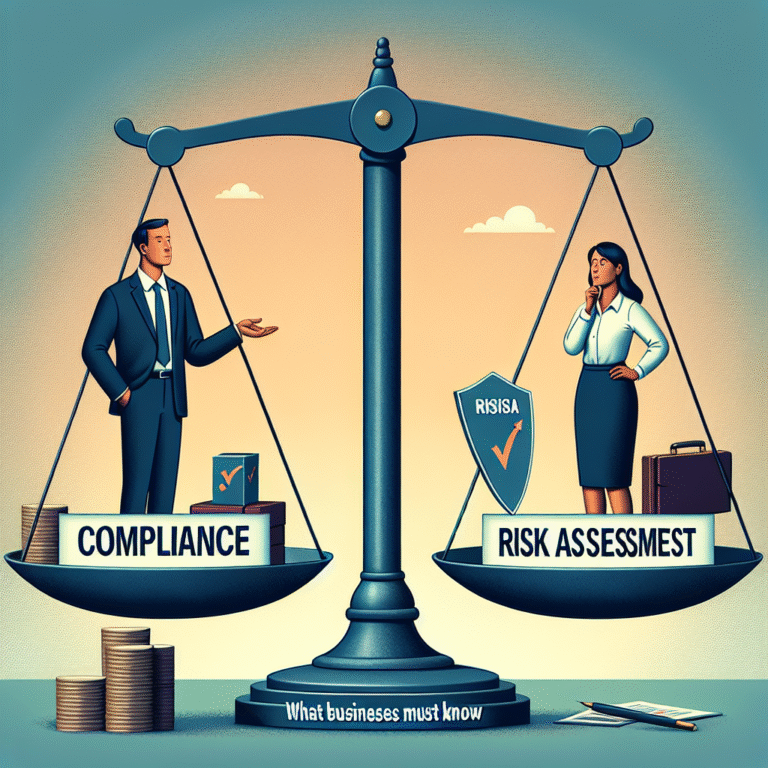
Introduction
In an age where digital threats evolve at a blistering pace and geopolitical landscapes are ever-shifting, organizations must embrace advanced threat assessment strategies to safeguard their assets. As we look beyond the basics, it becomes essential to cultivate a more nuanced understanding of the complexities within which these threats operate. This article delves into Beyond the Basics: Advanced Threat Assessment Strategies for Complex Environments, exploring the sophistication required to effectively address multifaceted vulnerabilities.
Understanding how to navigate this terrain is not merely an operational necessity, but a vital component of an organization’s overall resilience. Let’s embark on this journey and uncover the strategic pathways leading to fortified defenses against evolving threats.
Understanding the Complexity of Threat Environments
The Landscape of Modern Threats
Today’s threat landscape is characterized by rapid technological advancements and numerous actors with diverse motives. From nation-state cyber-attacks to insider threats, the nature of risks is intricate and multifaceted. Understanding these complexities is paramount.
Table 1: Types of Threat Actors
| Type of Threat Actor | Characteristics | Motive |
|---|---|---|
| Cybercriminals | Often operate for financial gain | Profit |
| Hacktivists | Driven by social or political agendas | Ideological |
| Nation-States | Use sophisticated tactics | National security |
| Insider Threats | Employees or contractors with access | Personal grievances |
The Importance of Contextual Understanding
Context is everything. Advanced threat assessment strategies entail a comprehensive understanding of not only who the threats are but why they exist. This concerns the motivations, capabilities, and contextual factors that allow these threats to manifest.
Case Study: The Target Data Breach
In 2013, cybercriminals exploited Target’s network, stealing personal and financial data from approximately 40 million customers. The breach illuminated how essential advanced threat assessment strategies are.
Analysis: Target failed to recognize the interplay between third-party vendors and internal systems. A robust approach that encompassed vendor risk assessments could have mitigated this significant threat.
Advanced Assessment Techniques
Risk Frameworks and Models
Utilizing established frameworks such as the NIST Cybersecurity Framework or ISO 27001 provides a structured methodology for organizations. These frameworks enable clearer risk identification, assessment, and response planning.
Case Study: NIST Framework in Action
Implementing the NIST framework at a government agency allowed for the identification of vulnerabilities that were previously overlooked. By adopting a systematic approach to threats, the agency improved its overall security posture significantly.
Analysis: The implementation of a robust framework facilitated a comprehensive risk management strategy, illustrating the value of established methodologies in assessing threats beyond conventional standards.
Real-time Threat Intelligence
Incorporating real-time data analytics to monitor ongoing threats is essential. Advanced threat assessment combines traditional analysis techniques with current threat intelligence from multiple sources, including social media, news reports, and dark web monitoring.
Table 2: Sources of Threat Intelligence
| Source | Description |
|---|---|
| Social Media | Insights into emerging threats and public sentiment |
| Vendor Reports | Updates on vulnerabilities and exploits |
| Dark Web Forums | Activity related to illicit trade and planning |
| Industry Alerts | Reports on specific threats targeted at an industry |
Scenario Planning and Simulations
Scenario planning involves envisioning potential threat landscapes and preparing strategic responses. Utilizing simulations can help organizations assess their readiness and adapt their strategies accordingly.
Case Study: Simulated Phishing Attacks
A financial institution deployed simulated phishing attacks to enhance employee awareness. The results showed improved responses; more employees could identify phishing attempts after initial training and exercises.
Analysis: This proactive method fortified the workforce’s defenses, showing how advanced strategies can significantly enhance an organization’s security culture.
Developing a Holistic Threat Assessment Strategy
Stakeholder Involvement
Engaging various stakeholders across the organization is critical for well-rounded assessments. Collaboration across teams—the IT department, human resources, and senior management—results in diverse insights and enhances overall preparedness.
Case Study: Cross-Departmental Collaboration
A healthcare provider established a cross-departmental security team, yielding a comprehensive understanding of vulnerabilities affecting both patient data and operational integrity.
Analysis: This collaborative strategy unraveled blind spots, reinforcing the idea that a unified approach is crucial in combating complex threats effectively.
Continuous Monitoring and Reassessment
A stagnant strategy is a weak strategy. Organizations must implement continuous monitoring practices to ensure that their threat assessments remain relevant as environments, technologies, and threats evolve.
Table 3: Components of Continuous Monitoring
| Component | Purpose |
|---|---|
| Regular Training | Keeps staff informed about the latest threats |
| Automated Alerts | Provides real-time updates on potential threats |
| Metrics and KPIs | Assesses the effectiveness of current strategies |
Conclusion
As we step Beyond the Basics, the necessity of integrating advanced threat assessment strategies into organizational systems becomes clear. Organizations must embrace a holistic, multi-faceted approach to effectively navigate today’s complex environments.
By understanding the intricacies of threats, implementing proven frameworks, engaging multiple stakeholders, and committing to continuous monitoring, organizations position themselves not just to respond to threats, but to anticipate and mitigate them effectively.
Inspirational Takeaway
As we move forward, let innovation and collaboration drive our methodologies. In an ever-evolving landscape, being proactive, not reactive, will be the cornerstone of sustained success in threat assessment strategies.
FAQs
1. What is advanced threat assessment?
Advanced threat assessment involves sophisticated techniques and strategies to evaluate potential threats that may impact an organization, far exceeding basic risk assessments.
2. How can organizations stay updated on new threats?
Staying updated requires continuous monitoring, subscribing to threat intelligence feeds, attending industry conferences, and fostering partnerships with cybersecurity communities.
3. Why is scenario planning important?
Scenario planning helps organizations prepare for various potential threats, enabling them to devise strategies that can effectively mitigate risks before they materialize.
4. How can real-time data analytics improve threat assessment?
Real-time data analytics helps in quickly identifying emerging threats and vulnerabilities, allowing for prompt decision-making and action.
5. What role do stakeholders play in threat assessment?
Stakeholders bring diverse expertise and perspectives, helping to create a well-rounded view of potential risks and enhancing the organization’s security strategies.
In engaging with the content articulated here—and as you implement these insights—remember that the aim isn’t just to protect but to empower. Embrace these advanced strategies with both anticipation and resilience.

















